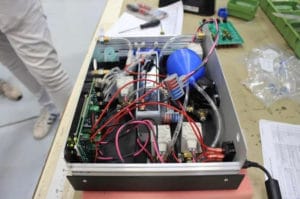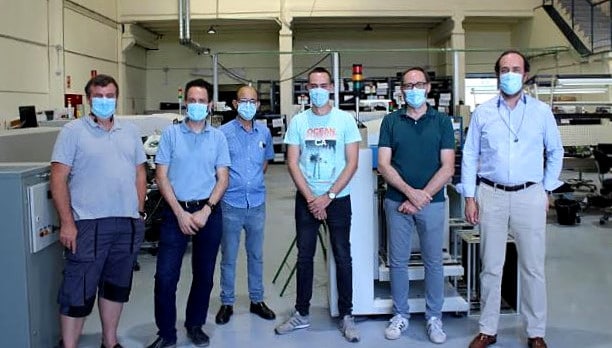It is widely acknowledged that collective intelligence delivers better solutions compared to a limited number of team members working on an innovation project. However, what is not talked about enough is the effect of this open model on the innovation process lead-time. After five years spent working on open innovation challenges, I am still surprised by the power of crowdsourcing to accelerate the innovation process.
Crowdsourcing has an accelerating effect on each stage of an innovation process. Investing in resources during the early stages of an innovation project with the aim of capturing a broad number of ideas and solutions (and evaluating them correctly) truly accelerates the remaining stages of the process. Every stage thus benefits, from ideation to design and development, prototyping, and final implementation (production scale-up, customer adoption, etc.).
- The design and development of a new product or process is easier if a simple solution is chosen during the evaluation and selection of concepts.
- As long as technical viability and proven experience (in other countries and industries) are considered during the initial evaluation and selection, fewer changes and a lower number of prototypes will be required later on.
- The product or service will be more quickly scalable if the client gets actively involved in the initial idea-scouting stage.
We have solved over a hundred over technology challenges at ennomotive, and here I share with you a recent success story about the development of the OxyVita emergency ventilator.
This challenge was published on ennomotive on March 18, 2020, as a solidarity initiative to offer countries in need a simple, robust, effective, low-cost, and scalable solution to fight the COVID-19 pandemic.
This was one of the many initiatives launched globally for the development of ventilators, either led by individuals, universities, and companies like Tesla, Ferrari, and others.
The crowdsourcing story of OxyVita ventilator’s development
Following the progression of the COVID-19 virus, the number of infected patients still grows exponentially every day in some countries. Given that 20% of them are hospitalized and 5% need admission in an ICU, the demand for ventilators is extremely high.
Almost no healthcare system was prepared for such high demand, so the rapid manufacturing of ventilators for hospitals everywhere became very urgent. Current ventilator models are complex and costly, and the number of manufacturers is limited. It was therefore not possible to supply the additional units needed in the short-term.
Consequently, we launched a challenge on our crowdsourcing platform, ennomotive, encouraging more than 20,000 engineers around the world to effectively find the best possible solution regarding time, efficiency, availability, and cost.
101 participants joined the challenge and after only seven days about 50 solutions were submitted. The participants peer-reviewed each other and evaluated them in around just two days.
The selected solution in Round 1 was submitted by the British engineer Frede Jensen, who proposed a ventilation system based on the classic ventilators from the past. He currently works for a local authority delivering traffic and parking management projects for efficient, healthier and safer streets, and improved air quality. Prior to this, he had several years’ medical sector experience, so he wasn’t new to medtech but was no longer formally engaged in it.
 His solution had three key benfits:
His solution had three key benfits:
- He kept it simple by eliminating any dispensable and expensive components that made the design complex to operate.
- Through using different components to the ones used in conventional ventilators, they were easier to find in a market that was experiencing high demand.
- It kept high-level safety standards within its electronic and software design. In particular, OxyVita has a double processor to control the pneumatic system while keeping a redundant monitoring system (watchdog).
 Selecting this solution had a tremendous impact on the rest of the innovation process. Since the ventilator components were easy to source, a small team built the first prototype in only two weeks. On April 15, the ventilator was successfully introduced to our healthcare partner in Spain, Vithas hospitals, who suggested minor changes.
Selecting this solution had a tremendous impact on the rest of the innovation process. Since the ventilator components were easy to source, a small team built the first prototype in only two weeks. On April 15, the ventilator was successfully introduced to our healthcare partner in Spain, Vithas hospitals, who suggested minor changes.
It was just as well that the process went extremely fast up until this point, because then many regulatory preclinical tests had to be performed: artificial lung test, animal test, and safety tests. A ventilator is a life-saving device used by actual people, and every test and validation is incredibly important.
In conclusion, the fast development, in just three weeks, of a ventilator for the intubation of ICU critical patients was only possible thanks to an open innovation challenge through crowdsourcing process.
Main image, left to right: Carlos Pardo (who handled the construction of the OxyVita ventilator prototype), David Ortiz, Javier Robles, Daniel Rodríguez, Enrique López, and Enrique Ramírez, ennomotive CEO.




0 Comments